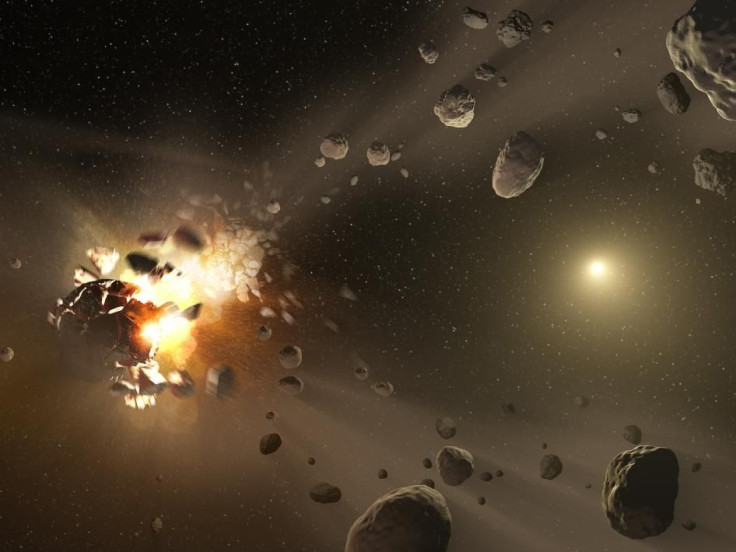Two 1,000ft 'Potentially Hazardous' Asteroids To Skim Earth In Late June

According to NASA’s Center for Near Earth Object Studies (CNEOS), two massive asteroids that are bigger than the Golden Gate Bridge towers are on a near-collision path with Earth. The space agency noted that the two asteroids are expected to approach Earth on the last week of June.
The first asteroid that will fly past Earth is called 2010 NY65. It is expected to approach the planet on June 24 at 4:59 pm ST. The asteroid, which has a whopping diameter of 984 feet, will travel at a speed of 28,000 miles per hour once it gets close to Earth.
According to CNEOS’ projections, the asteroid will approach Earth within a distance of 0.01961 astronomical units, or only about 1.8 million miles.
The second asteroid, on the other hand, is much larger than 2010 NY65. With a diameter of 1,082 feet, the asteroid, which was dubbed as 2008 KV2, is significantly taller than the Eiffel Tower. It will reach a speed of 25,000 miles per hour as it approaches Earth.
2008 KV2 is expected to be 0.04548 astronomical units or 4.2 million miles away from Earth when it flies past the planet.
Both asteroids have been categorized by NASA as PHAs or Potentially Hazardous Asteroids due to their size and distance from Earth. NASA defines PHAs based on "parameters that measure the asteroid’s potential to make threatening close approaches to the Earth."
Although Earth is relatively safe from the two approaching asteroids, NASA already has a vivid idea of the destruction that will happen if either one of these rocks hit the planet.
On April 29, the space agency held a simulation to determine the overall effect of a major impact event on Earth. The event, which was introduced through NASA’s fake press release, showed the actions carried out by the various space agencies and governments of different countries in preparation for Earth’s collision with an asteroid that’s as big as 2010 NY65.
Earth’s main countermeasure was sending a fleet of spacecraft to ram the massive asteroid in an attempt to destroy it or throw it off its course. Although the plan succeeded in breaking up the asteroid, a considerably large fragment was still on a collision course with Earth.
The planet’s last hope was to launch a nuclear missile to destroy the fragment. Unfortunately, diplomatic issues delayed the launch until the asteroid fragment entered Earth’s atmosphere and detonated over New York City’s Central Park, Live Science reported.
In the simulation, the asteroid produced an energy 1,000 times greater than the atomic bomb used on Hiroshima, Japan in World War II. It completely destroyed the city and its nearby surroundings.
© Copyright IBTimes 2024. All rights reserved.





















